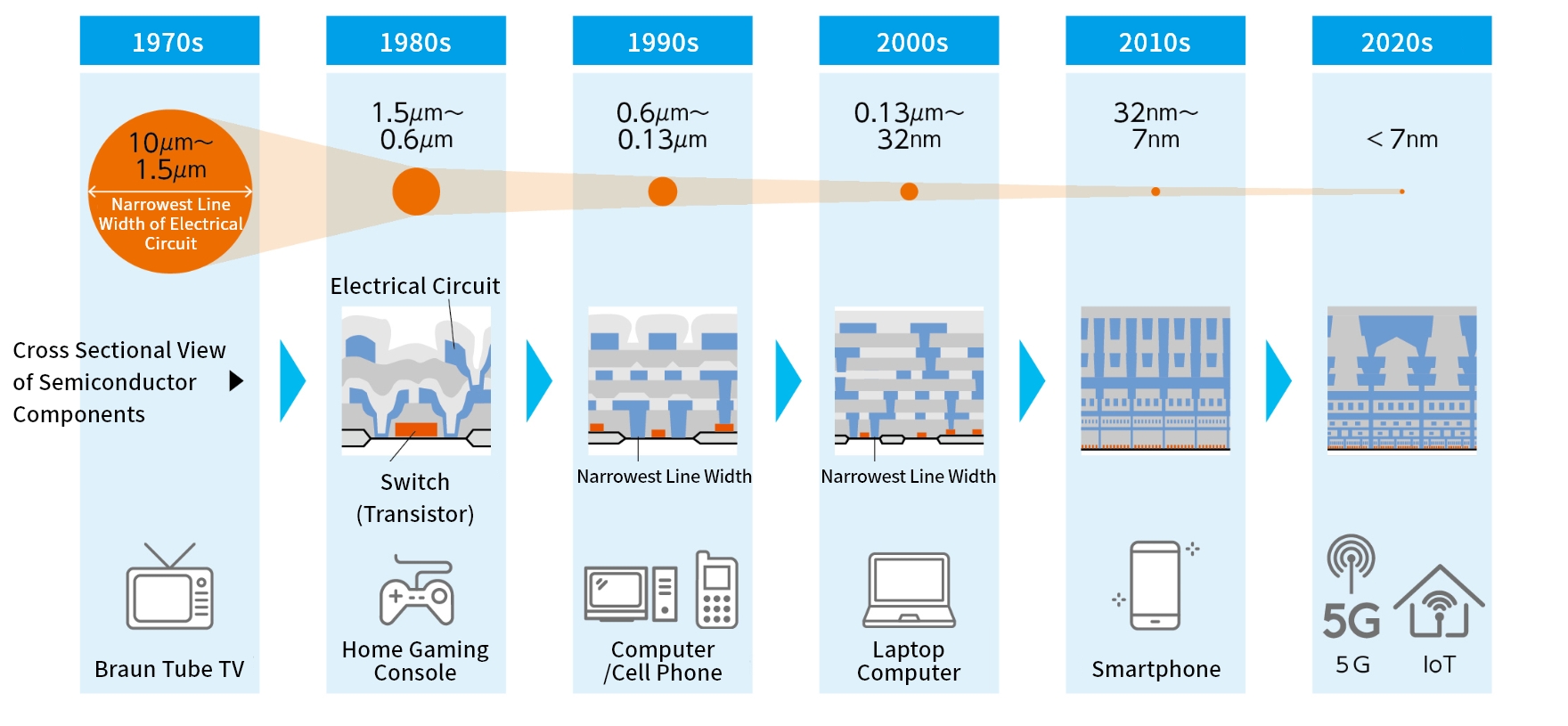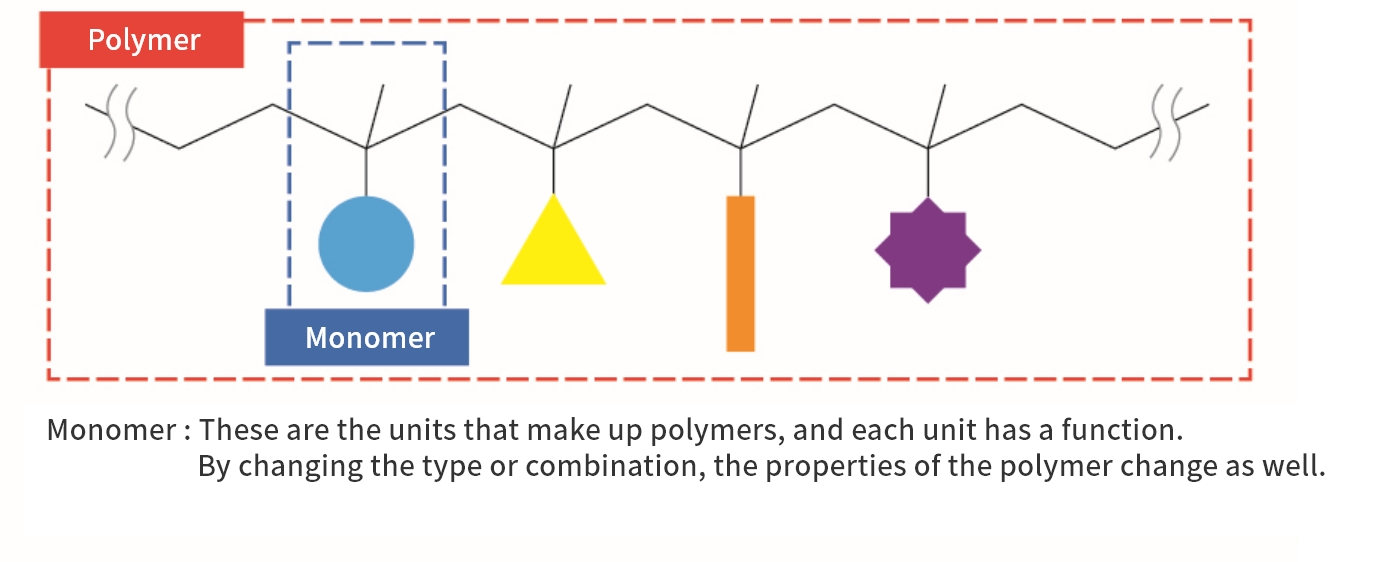Development of Low Defect Positive Photoresist for Immersion ArF

What is Photoresist?
The history of semiconductor device evolution can be said to be the history of miniaturization. Photoresist is an essential part of this microfabrication technology.
Photoresists use ideas from photographic techniques to transfer complex and fine circuit patterns to the substrate. So far, miniaturization has been achieved by shortening the wavelength of light sources such as g-line (436nm), i-line (365nm), KrF excimer laser (248nm), and ArF excimer laser (193nm). TOK has developed suitable materials for each change and has produced photoresists optimized for each wavelength.
Transitions in Photoresists

Polymers (high molecular weight compounds) play an important role in determining the performance required of photoresists, such as storage stability, environmental safety, fine resolution, and defect prevention. Polymers are composed of several constituent units called monomers (low molecular weight compounds), and by changing the structure of the monomers, various functions can be added. Also, the performance can be changed depending on the composition ratio of the monomers.
Therefore, TOK is developing photoresists that meet various requirements by developing high functional monomers, fine-tuning and optimizing the composition ratio.
Schematic Diagram of Polymers, the Main Component of Resist

Contact Us/Download Information
Please contact us if you have any requests or problems.
You can also access information related to each product.